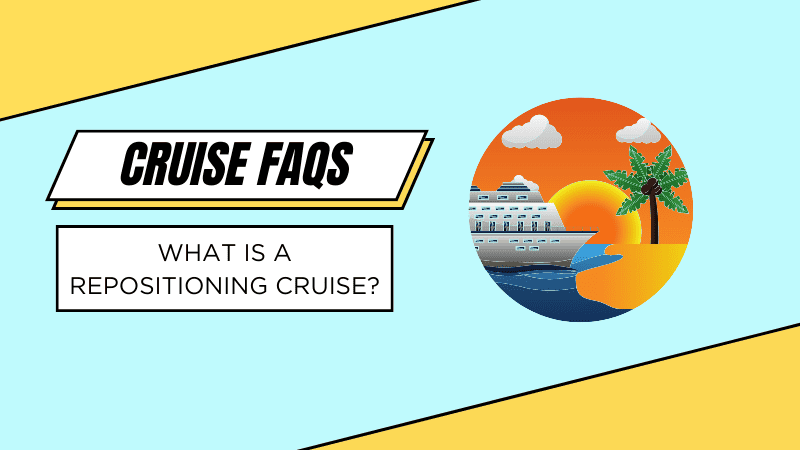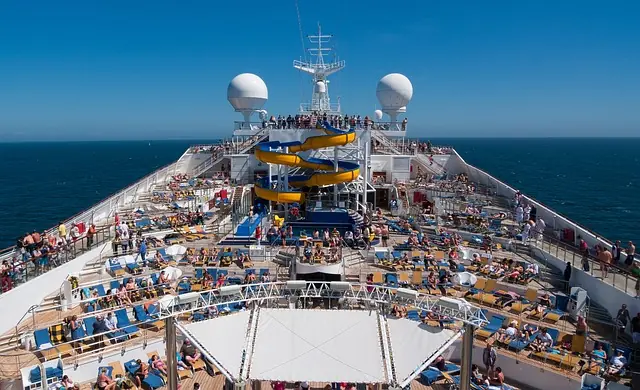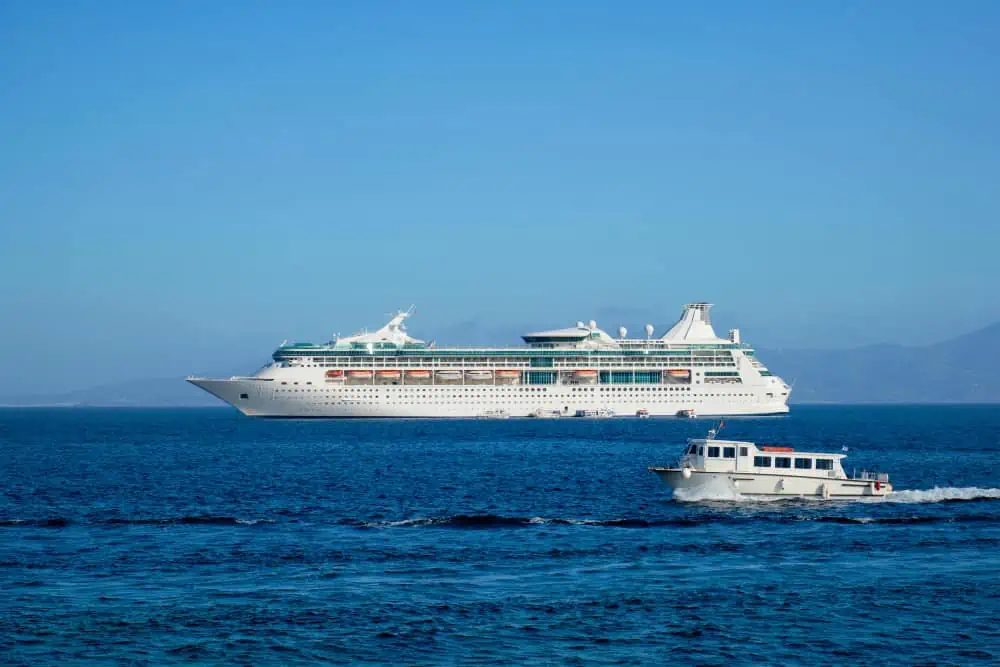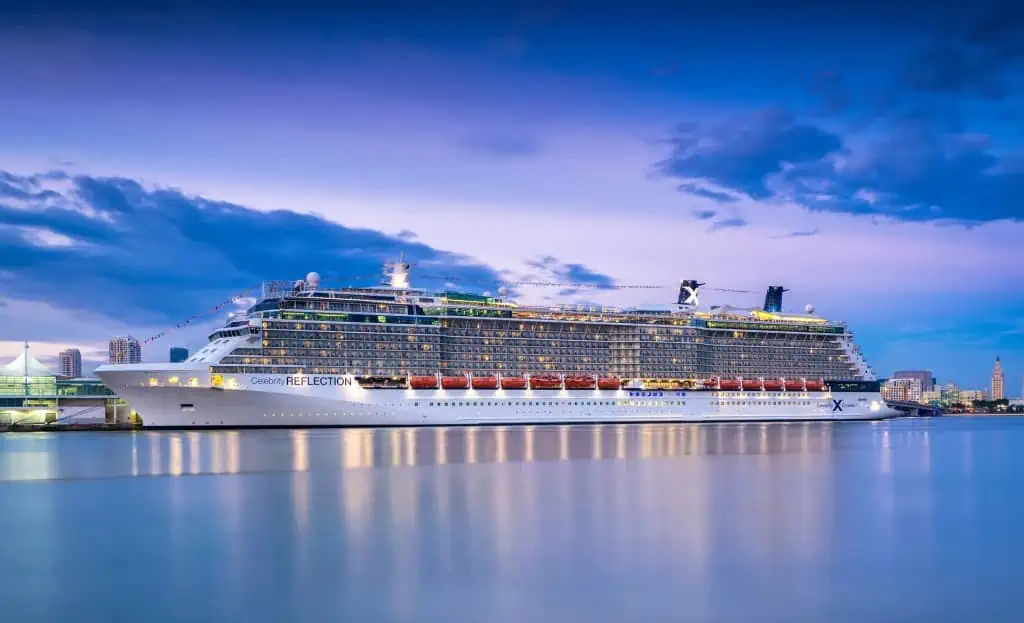My first repositioning cruise was an eye-opener. Sailing from Barcelona to Fort Lauderdale, I witnessed a kaleidoscope of cultures, landscapes, and experiences that regular cruises seldom offer.
For those unfamiliar with the concept, a repositioning cruise refers to the process of a ship moving from one geographic region to another, frequently bridging the gap between different seasons. We’ll explore everything from unbeatable deals and one-of-a-kind itineraries to the exhilarating days at sea and the rare ports we touch. And what better way to start than by understanding what a repositioning cruise is?
What is a Repositioning Cruise?
Have you ever wondered why some cruises don’t loop back to their starting point? That’s the beauty of a repositioning cruise. Think of it as a scenic route taken by cruise ships. These are one-way voyages that begin in one major cruise hub and conclude in another. It’s like taking a road trip without the need to circle back home. As the seasons change, so do the destinations of these ships.
They move to regions with more favorable weather, ensuring that we, as passengers, get the best experience possible.
How Do Repositioning Cruises Work?
Consider the case of cruise ships that frequent destinations with a specific cruise season, like Alaska or the Mediterranean. These places are buzzing with activity during certain months, but what happens when the season ends? That’s where repositioning plays a crucial role.
Take Alaska, for example. Its cruise season is bustling from May through September. Outside these months, you won’t find these ships in Alaskan waters. So, where do they go? Well, they don’t just take a break; they continue their journey in other parts of the world.
Around April, just before Alaska wakes up to its cruise season, you’ll find ships embarking on a special voyage from Asia to Alaska. Once September rolls around and the Alaskan season draws to a close, these ships don’t stay idle. They begin another repositioning cruise, this time heading back towards Asia, where they’ll spend the off-season months. These transitional cruises can offer some of the best values and unique experiences, ideal for those looking to explore beyond the typical Alaskan cruise itinerary.
When Do Repositioning Cruises Take Place?
The availability of repositioning cruises largely revolves around the concept of seasonal changes. Unlike regular cruises that might stick to a certain route year-round, repositioning cruises is all about adapting to the season. This adaptability is what makes them so special.
Typically, these cruises become available around the times when the weather shifts – mainly during spring and autumn. Why these times, you ask? It’s all about chasing the ideal cruising conditions. As certain regions transition into off-peak seasons, cruise lines strategically move their ships to more favorable climates. This ensures that passengers get the best experience, no matter the time of year. Given these varying conditions, packing for a cruise requires careful consideration. Essentials might include layers for changing weather, formal attire for dinner, and perhaps even binoculars for scenic views or wildlife spotting, ensuring you’re prepared for anything from sunny Caribbean beaches to crisp Alaskan fjords.
However, not all ships follow the same pattern. Some cruise lines keep their ships stationed in one place throughout the year, only moving them when they decide to introduce a new route or port. On the other hand, ships that sail in regions with shorter cruise seasons, like Alaska, South America, or parts of Europe, typically reposition at least twice a year – once at the beginning and once at the end of their respective seasons.
This flexibility in scheduling allows us as travelers to experience a variety of destinations and climates, all within the comfort of the same cruise line. It’s a unique aspect of repositioning cruises that keeps us coming back for more, eager to see where the ship will take us next as the seasons change.
Repositioning vs. Transatlantic Cruises: Understanding the Differences
As a seasoned cruiser, I’ve always been intrigued by the unique aspects of different types of cruises. Today, let’s compare a repositioning cruise with a transatlantic repositioning cruise to understand their differences.
Repositioning cruises, as we’ve discussed, are like the ocean’s nomads, moving from one region to another. They offer a blend of sea days and port visits, providing a balanced experience of relaxation and exploration. For instance, a repositioning cruise from Southern California to Vancouver, just before the Alaska cruise season, might take us along the picturesque Pacific Coast with stops in vibrant cities like San Francisco and the charming Astoria, Oregon.
In contrast, transatlantic repositioning cruises are a bit different. They often have more consecutive sea days, creating a serene environment that’s perfect for those who love the tranquility of the open ocean. Port stops on these cruises can be quite unique, like the enchanting Canary Islands of Spain or the Azores Islands of Portugal, offering a taste of remote, exotic locales.
Duration-wise, repositioning cruises often extend beyond the standard one-week itinerary. This is due to the distances covered, like sailing from Florida to Europe, which naturally takes longer than a round-trip Caribbean cruise. The flexibility here is vast – ranging from quick 4-5 day trips (like Southern California to Vancouver route) to epic month-long journeys spanning continents. Now, when packing for a 7-day cruise, consider the variety of activities and climates you’ll encounter, ensuring your wardrobe is as adaptable as your itinerary.
So, while both types of cruises offer days at sea and port visits, repositioning cruises tend to offer more varied itineraries and longer durations. Whether you’re sailing across the Atlantic or along the coast, each type of cruise presents its own set of adventures and opportunities to explore the world.”
Duration of Repositioning Cruise
The length of a repositioning cruise is notably longer due to the vast distances covered. Usually, these voyages span a duration ranging from 13 to 19 nights. Additionally, it’s a common feature of these trips to encompass several consecutive days spent at sea, occasionally extending up to 10 nights. This extended duration is part of what makes repositioning cruises a unique and immersive experience.
Weather Conditions on Repositioning Cruises
One thing I’ve come to appreciate about repositioning cruises is the ever-changing tapestry of weather. Sailing through different climates and seasons, these cruises offer a unique blend of weather conditions, something you rarely experience on more stationary voyages.
For instance, on my journey from Florida to Europe, I started with the warm, sunny skies of the Caribbean and gradually transitioned to the cooler, brisk air of the Atlantic. It was fascinating to observe how the weather evolved each day, almost like a live demonstration of a geography lesson.
These cruises often cross different weather zones, so it’s not unusual to experience a wide range of conditions. I remember, vividly, the days of basking in the Mediterranean sun and then bundling up as we sailed into the cooler northern waters. It’s a part of the adventure – packing for multiple climates and waking up to new weather each morning.
What stands out in these experiences is the unpredictability. On one transpacific repositioning cruise, we had days of gentle ocean breeze and suddenly found ourselves amid a brisk wind as we approached the Polynesian Islands. It’s this variety that adds an extra layer of excitement to repositioning cruises, making each day an anticipation of what Mother Nature has in store.
Typical Repositioning Cruise Itineraries
One of the most memorable repositioning cruise destinations I’ve been on was from Florida to Rome. Other typical itineraries include voyages from Sydney to Honolulu and Europe to Florida. These routes are not just about getting from point A to B. For example, the Sydney to Honolulu route immerses you in the diverse cultures of Australia and Hawaii, blending the urban sophistication of Sydney with the tropical paradise of Honolulu.
Speaking of seasonality, many Mediterranean and Baltic sailings peak in spring through early fall. As winter approaches, ships set sail from Europe in search of the sunnier Caribbean climates. This requires a relocation back from the Caribbean to Europe in the spring, with a return voyage in the fall. On the other hand, some ships remain in the Caribbean throughout the year, moving only when the cruise line decides to change their home port.
In recent years, the Middle East and Asia have also become popular for repositioning cruises. For instance, MSC Cruises offers a journey from Dubai to Genoa, Italy, which is an incredible 21-day voyage through the Suez Canal. This route is a spectacular blend of modern marvels and ancient wonders, sailing from the futuristic cityscape of Dubai to the historic grandeur of Genoa
Another captivating aspect of repositioning cruises, or ‘repo cruises’ as they’re fondly called, is their length and the vast distances they cover. Many of these cruises are voyages across the Atlantic or through the iconic Panama Canal. One particularly memorable journey for me was a transatlantic cruise that provided an opportunity to visit several rarely-seen ports, offering glimpses into cultures and places I’d never imagined.
These one-way cruises mean you’ll end up flying back home, but it’s a small price to pay for the wealth of experiences. On one such voyage, I explored Europe in a way I never had before, without the slightest hint of jet lag – a true bonus!
Ships often move from East Coast ports like New York and Fort Lauderdale to Europe for a season of Western Mediterranean or Northern European sailings. Then, as the weather turns colder, they make their way back to warmer destinations, offering Caribbean, Bahamas, and Bermuda cruises. This constant movement not only brings variety to the cruise itineraries but also allows travelers like us to experience different parts of the world in different seasons, all on the same ship.
On-Board Experience: What to Expect
My voyage with Celebrity Cruises was a chapter of luxury and engagement that I often find myself reminiscing about. On board, every element felt tailored to elevate the cruising experience. The spa served as a sanctuary for tranquility, providing therapies that revitalized both the physical and mental well-being. The highlight was an oxygen facial, a blissful treat that left me feeling refreshed and revitalized.
The SEA Thermal Suite, especially on the Edge-Series ships, was a realm of tranquility. Each relaxation room, from the crystalarium to the infrared sauna, offered a unique way to unwind. Lying on the heated tile loungers, I would often lose track of time, enveloped in serene warmth.
The range of activities was equally impressive. I took part in wine classes led by an expert sommelier, delved into digital creativity in the computer room, and even discovered new culinary skills.
This level of luxury and variety isn’t exclusive to Celebrity Cruises. On most repositioning cruises, the days at sea are filled with opportunities to explore new hobbies and interests. You could find yourself immersed in arts and crafts workshops, or shaking up a storm in mixology classes. These activities are not just entertaining; they offer a chance to learn something new, to take a skill back home.
Entertainment and leisure are also key components. Many ships feature game rooms and outdoor sports facilities, ensuring that there’s never a dull moment. From playing shuffleboard under the open sky to participating in interactive shows and dining experiences, the options are endless.
Benefits of Choosing a Repositioning Cruise
1. Cost-Effective Travel: Repositioning cruises often offer significant value for the price. Since they’re one-way and fill the gap between seasons, you can enjoy luxury cruise experiences at a fraction of the cost compared to standard round-trip cruises.
2. Extended Itineraries: These cruises provide longer itineraries, allowing for more relaxation and exploration time. You get to enjoy the journey without the rush, experiencing a blend of multiple destinations and cultures in one trip.
3. Unique Destinations: Repositioning cruises often include stops at ports that are not typically part of regular cruise routes. This gives you the chance to explore rarely visited destinations and enjoy unique shore excursions.
4. Seasonal Scenery: Since these cruises are scheduled around seasonal changes, passengers can enjoy a variety of climates and scenic views. From the blooming landscapes of spring to the colorful foliage of autumn, the changing scenery adds a unique charm to the journey.
5. Less Crowded & Relaxing: These cruises tend to be less crowded than peak-season cruises, offering a more relaxed atmosphere. With fewer passengers, you can enjoy more personalized service and less competition for onboard amenities and activities.
Considering the Downsides
1. Extended Periods at Sea: For some travelers, the long stretches of sea days, especially on ocean crossings, can feel isolating and monotonous. The ‘middle of nowhere’ sensation isn’t for everyone and can be particularly challenging for those prone to seasickness.
2. Long Duration: The length of repositioning cruises, which can extend up to a month, often restricts them to individuals with flexible schedules, such as retirees or those with substantial vacation time. This duration can be a significant barrier for people with limited time off.
3. Complex Travel Arrangements: The one-way nature of these cruises necessitates arranging one-way or open-jaw flights for the return journey. These types of flights can be more costly and complex to book compared to standard round-trip airfare.
4. Limited Appeal for Certain Demographics: Due to their length and extended sea days, repositioning cruises may not appeal to families with children, those with busy work schedules, or travelers who prefer frequent port stops and a variety of destinations.
5. Adapting to Climate Changes: Crossing multiple climate zones means passengers need to be prepared for a wide range of weather conditions, which can be a packing challenge and may not suit everyone’s preferences.
Are Repositioning Cruises More Affordable?
Yes, repositioning cruises are often more affordable compared to standard sailings. The key reason lies in their unique nature – with more sea days and specific characteristics that might not appeal to everyone. Consequently, the per-day rates are typically lower.
For budget-conscious travelers, these cruises can offer excellent value, combining the luxury of a cruise with cost efficiency. While they already tend to be cheaper due to the extended days at sea, holding off on immediate booking can be beneficial. Last-minute deals are common in repositioning cruises, with some offers being meager, such as around $40 per night for an inside cabin. These aspects make repositioning cruises attractive for those seeking a cruise experience without the hefty price tag.
Top Cruise Lines for Repositioning Journeys
When considering a repositioning cruise, several cruise lines offer standout experiences. Carnival, Royal Caribbean, and Norwegian are popular for their fun and diverse itineraries, striking a balance between quality and affordability. For a more upscale experience, lines like Celebrity, Princess, or Holland America provide refined amenities and exotic routes.
For an all-inclusive luxury voyage, Sea Dream Yacht Club is a superb choice, with 2023 prices starting at approximately $3999, equating to around $300 per person per day. Another premium option is Viking’s 29 days Greenland, Norway, Iceland, & Beyond cruise. This extensive journey, running between Bergen, Norway, and New York City with 17 port calls across five countries, offers fares starting at $13,998 per person in 2023. Each of these lines caters to different preferences and budgets, from fun and casual to luxurious and comprehensive, ensuring there’s a repositioning cruise for every type of traveler.
Conclusion
As we draw to a close, I can’t help but reflect on my journeys on repositioning cruises. These voyages have offered me more than just travel; they’ve been a gateway to new horizons and unforgettable experiences. From the tranquil days at sea to the excitement of exploring less-traveled ports, each cruise has been a story in itself. Yes, they are longer and require some extra planning, but the adventures and the value they offer are well worth it. To my fellow travelers seeking something beyond the ordinary cruise experience, a repositioning cruise is a treasure trove of discoveries, where each day brings a new perspective and a deeper appreciation for the vast and beautiful world we sail through.
FAQs
Are repositioning cruises good value?
Yes, repositioning cruises offer great value. Due to their longer routes and multiple days at sea, the per-day prices are generally lower. This makes them an affordable choice for those who enjoy the cruising experience and are looking for a cost-effective way to explore new destinations.
What is the difference between a regular cruise and a repositioning cruise?
A regular cruise typically follows a set, round-trip route with frequent stops, while a repositioning cruise is a one-off itinerary moving a ship from one region to another. Repositioning cruises often have longer sea days, and fewer port calls, and may cover more diverse and unique destinations.
What are repositioning cruise deals?
Repositioning cruise deals offers the chance to experience extensive and unique itineraries at a lower cost. These cruises can encompass vast areas like the entire Caribbean coast, cross oceans with stops in remote locations, or combine multiple cruising regions in one journey, providing a comprehensive travel experience.
Are repositioning cruises less crowded?
Yes, repositioning cruises are generally less crowded compared to standard cruises. Their unique nature, involving longer sea days and one-way itineraries, appeals to a more specific group of travelers, leading to lower occupancy rates. This can result in a more relaxed and intimate cruising experience.








